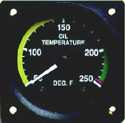Aero-Tips!
A good pilot is always learning -- how many times have you heard
this old standard throughout your flying career? There is no truer
statement in all of flying (well, with the possible exception of
"there are no old, bold pilots.") It's part of what makes aviation
so exciting for all of us... just when you think you've seen it
all, along comes a scenario you've never imagined.

Aero-News has called upon the expertise of Thomas P. Turner,
master CFI and all-around-good-guy, to bring our readers -- and us
-- daily tips to improve our skills as aviators, and as
representatives of the flying community. Some of them, you may have
heard before... but for each of us, there will also be something we
might never have considered before, or something that didn't
"stick" the way it should have the first time we memorized it for
the practical test.
It is our unabashed goal that "Aero-Tips" will help our readers
become better, safer pilots -- as well as introducing our
ground-bound readers to the concepts and principles that keep those
strange aluminum-and-composite contraptions in the air... and allow
them to soar magnificently through it.
Look for our daily Aero-Tips segments, coming each day to you
through the Aero-News Network. Suggestions for future Aero-Tips are
always welcome, as are additions or discussion of each day's tips.
Remember... when it comes to being better pilots, we're all in this
together.
Aero-Tips 05.27.06
A reader writes:
 I was told it is not good to run an
aircraft like I did yesterday: 0.8 hours up and 0.9 hours back. My
factory Service Center lead mechanic told that I need to put 1.0 or
more each time I start it. What are your thoughts?
I was told it is not good to run an
aircraft like I did yesterday: 0.8 hours up and 0.9 hours back. My
factory Service Center lead mechanic told that I need to put 1.0 or
more each time I start it. What are your thoughts?
I replied:
That's not an issue. As long as the oil gets to "green arc"
temperature, to boil out trapped moisture, you're copasetic.
Moisture condenses inside engines when they sit on the ground.
Especially in moist climates, the longer the engine sits without
running, the more moisture may form inside it.
More importantly, water is highly acidic and corrosive. If oil
drains off internal parts of the engine (during extended ground
time), leaving bare metal exposed to acidic, wet air, the inside of
the engine will begin to pit and rust. Long periods without running
correlate very closely with engines that need premature cylinder,
lifter and valve replacement.
NOTE: That's why most engine manufacturers
recommend moisture-displacing desiccant plugs or bags be placed in
an engine that won't be run for more than a couple weeks.
Oil Temperature
Cockpit-indicated oil temperature is not the hottest oil gets in
the system—it's merely taken at a point convenient in engine
design. Oil in pats of the engine can be at water-boiling
temperatures when the temperature indicates near the bottom of the
green arc, which is typically around 38 C or 75 F—well below
the 100 C/212 F boiling point. Once oil is hot enough to boil off
water, the engine is getting rid of acids that would otherwise
destroy it from the inside out.
Oil generally won't get hot enough to boil away all the water
merely running on the ground. Take the plane around the pattern
only once, however, and you'll likely have eliminated any
water-in-the-oil threat.
Back to the mechanic's advice: I asked the reader to challenge
his mechanic to explain how an extra six minutes (from 0.9 hour to
a full one hour) would make a difference. Would flying at a reduced
power setting to make the trip last a few minutes longer increase
engine longevity? If the headwind is a little stronger, making the
flight take six minutes longer, will this make the engine more
likely to make its Time Before Overhaul (TBO)? We've not heard back
yet.
Life Cycles
Maybe the mechanic was more concerned about engine starting
cycles, the number of times in its lifetime it is started. Since
oil does drain down from parts of the engine during "off" periods
(NOTE: modern engine oils adhere much longer
to engine parts than earlier blends), metal is exposed to more
wear during a start than any other time. Shorter flights mean more
cycles over a lifetime, and less likelihood the engine can
withstand the wear to TBO. But if that is the consideration,
duration of a flight would not be the issue—more important
would be how many times the airplane flies.
Aero-tip of the day: You're far more likely to
have trouble-free engine life if you fly the airplane at least once
a week. Get the oil up to cruise temperature and you'll burn off
corrosion-promoting water in the oil. Beyond that and barring the
issue of cycles, duration of a flight should not have a direct
bearing on engine life.
 ANN's Daily Aero-Linx (04.13.24)
ANN's Daily Aero-Linx (04.13.24) ANN's Daily Aero-Term (04.13.24): Beyond Visual Line Of Sight (BVLOS)
ANN's Daily Aero-Term (04.13.24): Beyond Visual Line Of Sight (BVLOS) Airborne 04.09.24: SnF24!, Piper-DeltaHawk!, Fisher Update, Junkers
Airborne 04.09.24: SnF24!, Piper-DeltaHawk!, Fisher Update, Junkers Aero-News: Quote of the Day (04.14.24)
Aero-News: Quote of the Day (04.14.24) ANN's Daily Aero-Term (04.14.24): Maximum Authorized Altitude
ANN's Daily Aero-Term (04.14.24): Maximum Authorized Altitude




